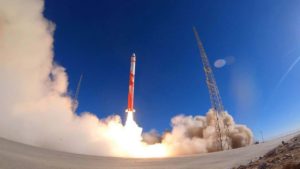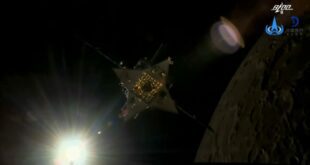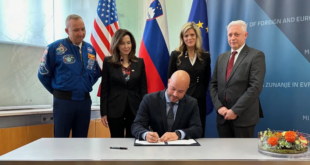
Chinese commercial launcher developer and launch service provider LandSpace announced during the MAKS 2019 show, that the company is seeking and accepting payloads from around the world for the maiden launch of its proprietary ZhuQue-2 (ZQ-2) launcher powered by a LOX/LCH4 liquid-propellant rocket engine (LRE).
LandSpace President Zhang Long stated, “As China’s first medium-scale launcher with LOX/LCH4 propellants, ZQ-2 is widely recognized as a reusable eco-friendly and affordable solution designed for providing launch and orbital deployment services for small and medium satellites.” LCH4 helps improve the reusability of the engine as it is widely available and low-cost and helps prevent carbon deposits when the fuel is burning in the engine.
The 49.5-meter-long ZQ-2 launcher measuring 3.35 meters in diameter produces 268 tons of lift-off thrust at 216 tons in mass. ZQ-2 is designed to deliver 2-ton payloads (the upper-stage supports 4-ton payloads) into the sun-synchronous orbit (SSO) at an orbit height of 500 kilometres with the aim of addressing the launch requirements of most small and medium commercial satellites in the market. ZQ-2 offers several standard LV-S/C interfaces, including standard-sized clamp-band separation system, low-shock separation systems and cube satellite dispensers (PODs), as well as the exclusive orbit deployment of a large payload, small satellites sharing and aggregated orbit deployment of cube satellites, among other launch options. In addition, ZQ-2 offers custom-designed LV-S/C connectors for addressing different kinds of launch missions.
Mr. Zhang indicated that ZQ-2 launchers are designed as a low-cost and universal solution. The company plans to improve the reusability and extend payload capacity in the future. The ZQ-2 liquid launcher series, which is designed based on the design concept of “one propellant combination, one universal diameter for the launcher body and two thrust-levels of engines”, delivers a launch capacity ranging from tons to tens of tons in different combinations with the goal of providing customers with a wide range of liquid-propellant solutions that can place satellites into low, middle and high orbits.
LOX/LCH4 propellant combination is widely recognised by global commercial launcher companies as the propellant choice for the next-generation low-cost launchers. US-based commercial aerospace companies Space X and Blue Origin have successfully developed LOX/LCH4 engines and selected LOX/LCH4 as the propellant for their next-generation rockets. ZQ-2 is China’s first low-cost launcher with the liquid propellant combination of LOX/LCH4 and is a truly cryogenic launcher which is recognised as the so-called “Icy Rocket”. In the upcoming era of low-cost and reusable commercial launch vehicles, ZQ-2 will provide global customers with cost-effective launch services.





